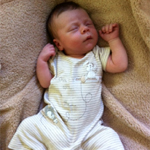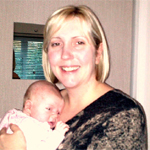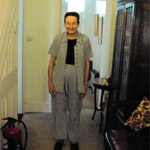The art of recovery: exactly why some R&R is important
Rest and recovery: how much do you get? In a fast-paced world, the two ‘Rs’ are something we should all be dedicating time to. But actually taking the time out to rest and recover is something that can fall further and further down our to-do list.
“When some clients come to me after an accident, fall or injury, many often just expect their body to snap back,” Osteopath Denise Callaghan says. “But unfortunately, that’s not always the case. Recovery is one of the most important aspects of a healthy lifestyle,” Denise adds. “But it’s also something that can take a while to master.”
With race season in full swing, tennis mania just around the corner and summer holiday mode nearly here, we wanted to highlight the importance of getting enough R&R.
The benefits of rest
- Rest can help recovery
Despite what you might think, resting your body isn’t just about doing nada. “If you’ve exercised, when your body is resting this is when your fibroblast cells are repairing the tiny, microscopic tears that have been created in your muscle tissue by lifting weights or working out.” These fibroblast cells knit the muscle tears together and essentially help the tissue heal and grow. Leaving you with stronger muscles.
- Rest prevents muscle fatigue
Muscle fatigue is no laughing matter. If you’ve ever gone for a run, hit the gym or just done a heavy shift in the garden, you might have experienced muscle fatigue and soreness. You might have even experienced this the next day. This is called delayed onset muscle soreness — or DOMS for short.
“When you exercise, it depletes your muscles’ glycogen levels,” Denise explains. “But when you rest, this is when your glycogen stores start to refill.”
- Rest reduces risk of injury
Mistakes happen when you or your muscles are tired. When your body is overworked, you’re more likely to miss a step, lose your form or drop a weight. All of which can leave you with an injury, pain or taking more rest days than you wanted.
Here’s the good news: Osteopathy can help
Osteopathy is a way of detecting, treating and preventing health problems by moving, stretching and massaging a person’s muscles and joints.
It’s been proven to increase the mobility of joints, relieve muscle tension, reduce pain, enhance the bloody supply to tissues and help the body to heal.
Osteopathy can do this through:
- Direct Soft Tissue Techniques
- Articulation
- Use of the Thrust Technique
- Use of the Muscle Energy Technique
- Counterstrain
And so can acupuncture
Acupuncture, which is an ancient Chinese technique that has been used for thousands of years, can help maintain the body’s overall balance.
“Clinical studies have shown that this form of alternative medicine may specifically benefit stress/anxiety disorders and help promote relaxation,” Denise says. That’s because acupuncture can stimulate the nervous system and cause the release of neurochemical messenger molecules.
The biochemical changes influence the body’s homeostatic mechanisms, and in turn, reduce sensitivity to pain and stress and promote relaxation. “The calming nature of this alternative treatment is therefore believed to decrease the heart rate, lower blood pressure and relax the muscles,” Denise adds.
If you are in pain, or need some rehab, or your muscles need some relaxation, do get in touch with Denise.
Denise has more than 35 years’ experience in the industry and has treated a number of patients over this time. So don’t hesitate to reach out.





















